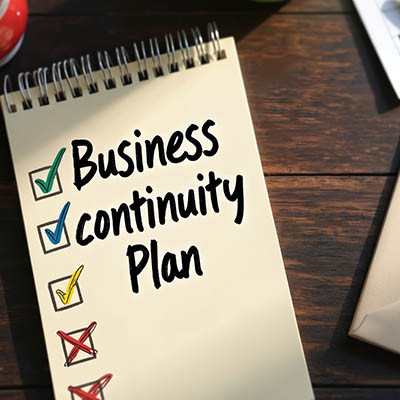Datalyst Blog
The Basic Dos & Don'ts of Business Continuity Planning
Any business can face a variety of disruptions, from natural disasters to cyberattacks. While many organizations understand the importance of preparing for the unexpected, not all of them have a solid plan in place. A well-crafted business continuity plan (BCP) is crucial for protecting your employees, customers, and bottom line.
Here are some key dos and don'ts to consider when creating your business continuity strategy.
The Dos
Conduct a Thorough Risk Assessment.
Before you can build a plan, you need to know what you're up against. Identify potential threats and vulnerabilities specific to your business, such as your location, size, and services. A risk assessment will help you determine the most likely scenarios and the resources you need to mitigate them.
Test Your Plan Regularly
A plan that sits on a shelf is useless. Regularly test your BCP through drills and simulations to find any gaps or weaknesses. This practice ensures your employees know their roles and responsibilities in a crisis and that the plan is viable in a real-world situation.
Include All Employees
Business continuity is not just for senior management or the IT department. Every employee plays a part in the plan's success. Make sure all staff are aware of the protocols, communication channels, and what to do during an emergency.
Have a Communication Strategy
During a crisis, clear and consistent communication is paramount. Establish a plan for how you will communicate with employees, customers, suppliers, and other stakeholders. This should include emergency channels, contact lists, and pre-approved messaging.
Keep the Plan Up to Date
Your business is constantly evolving, and so are the risks you face. Review and revise your BCP at least once a year, or whenever there are significant changes to your business, such as new technology, new locations, or a change in key personnel.
The Don'ts
Don't Focus Only on IT
While IT systems are critical, a comprehensive BCP should cover all aspects of your business, including physical infrastructure, human resources, and supply chain. Don't make the mistake of thinking data backup and recovery are the only things you need to worry about.
Don't Underestimate the Scope of a Disaster
It's better to be over-prepared than under-prepared. Assume a worst-case scenario and plan accordingly. This includes having a recovery site and redundant systems in place in case your primary location is unusable.
Don't Rely Solely on One Person
Ensure that tasks and responsibilities have clear backups. What happens if a key employee is unavailable during a disaster? Your plan should have a line of succession and redundant roles to ensure continuity.
Don't Forget About Your Suppliers and Partners
Your business relies on external parties. If they are affected by a disaster, your operations could be disrupted. Talk to your suppliers about their own business continuity plans and have alternate vendors in mind.
Don't Play It by Ear
A disaster is not the time for improvisation. Having a detailed, step-by-step plan is essential to minimize downtime and get your business back up and running as quickly as possible.
By following these dos and don'ts, you can build a more resilient business and face any disruption with confidence. A strong business continuity plan is an investment in your company's future and its ability to weather any storm.
If you would like to learn more about how our team of professionals can help you sort out your business continuity strategy and get you the tools to make it hum. give us a call today at (774) 213-9701.


Comments